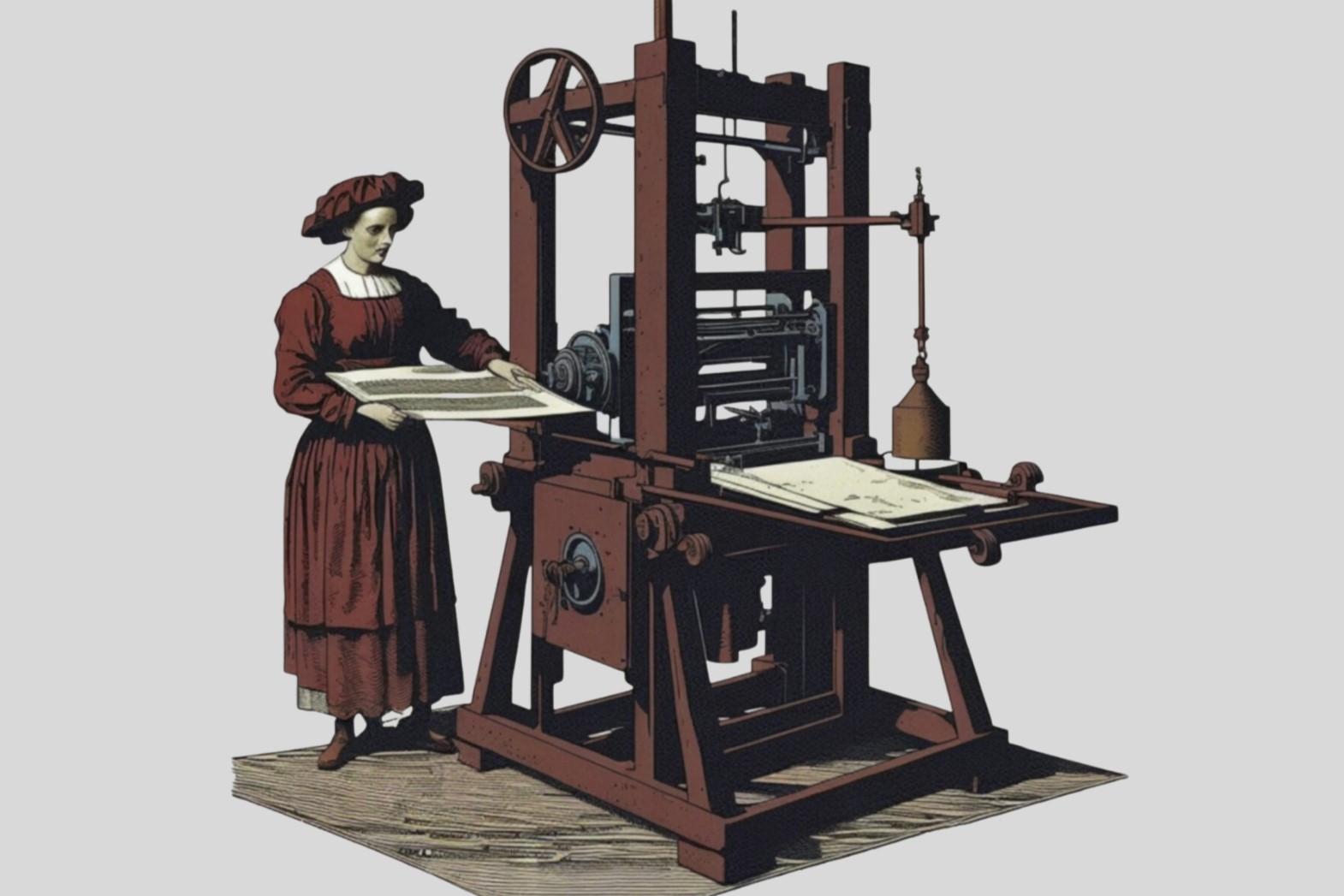
Ever wondered how the world of printing evolved from painstakingly slow hand-copying to the lightning-fast presses we have today? The printing press is where this fascinating transformation began. Imagine living in a time when books were as rare as hen's teeth, and along comes this invention that suddenly makes books accessible to the masses. Sounds like a game-changer, right? Well, it was! From revolutionizing the way knowledge was shared to shaping the modern world, the printing press has a story worth telling. Ready to dive into the past and uncover some mind-blowing facts about this groundbreaking invention? Let's get the ball rolling and uncover 18 of the best facts about the printing press that changed the world as we know it.
Key Takeaways:
- The printing press, invented by Johannes Gutenberg, revolutionized the way books were produced, making knowledge more accessible and contributing to the spread of new ideas during the Renaissance and Reformation.
- The impact of the printing press extends to modern society, influencing digital printing technologies, the democratization of information, and the enduring popularity of physical books.
The Invention of the Printing Press
In the mid-15th century, a groundbreaking invention emerged that would forever change the course of history. This was the printing press, created by Johannes Gutenberg in Mainz, Germany. Before its invention, books were painstakingly copied by hand, making them rare and expensive. Gutenberg's press made it possible to produce books quickly and in large quantities, democratizing knowledge and information.
-
Johannes Gutenberg, a German blacksmith, goldsmith, printer, and publisher, invented the printing press around 1440.
-
The key component of Gutenberg's invention was the use of movable type, made from a durable alloy. This innovation allowed for the assembly of words and sentences by rearranging letters, significantly speeding up the printing process.
The Impact on Society
The printing press had a profound impact on society, culture, and education. It played a crucial role in the spread of the Renaissance, the Reformation, and the Scientific Revolution. By making books more accessible, it also helped increase literacy rates across Europe.
-
The first major book printed using mass-produced movable type was the Gutenberg Bible, also known as the 42-line Bible, completed around 1455.
-
The printing press is often credited with contributing to the development of the Renaissance, the Reformation, and the Age of Enlightenment by facilitating the spread of new ideas.
-
Literacy rates in Europe saw a significant increase following the advent of the printing press, as books became more affordable and accessible to the general public.
The Evolution of Printing Technology
Over the centuries, the printing press evolved with advancements in technology, leading to the development of new printing methods and machinery. These innovations continued to transform how information was disseminated and consumed.
-
By the 19th century, steam-powered printing presses had been developed, increasing the speed and efficiency of printing.
-
The introduction of the Linotype machine in 1884 and the Monotype machine in 1887 revolutionized printing by automating the process of setting type, making it even faster and more cost-effective.
The Global Spread of the Printing Press
The invention of the printing press was not confined to Europe. Its technology spread across the globe, influencing cultures and societies in diverse ways.
-
The printing press reached the Ottoman Empire in the late 15th century, but its use was initially restricted due to concerns over the control of knowledge.
-
In East Asia, movable type printing had been invented centuries before Gutenberg's press, but the widespread use of characters in languages like Chinese made the technology less impactful than in Europe.
-
The first printing press in the Americas was established in Mexico City in 1539, significantly impacting the spread of information in the New World.
The Printing Press and Modern Society
Even in the digital age, the legacy of the printing press is evident. Its invention laid the groundwork for the mass dissemination of information, a concept that continues to shape our world.
-
The principles of the printing press continue to influence modern printing technologies, including digital printing and 3D printing.
-
The democratization of information initiated by the printing press can be seen as a precursor to the development of the internet and social media platforms, where information is shared freely and widely.
-
Despite the rise of digital media, physical books remain popular, demonstrating the lasting impact of Gutenberg's invention on how people consume literature and information.
-
The UNESCO Memory of the World program recognizes the Gutenberg Bible as one of the most significant documents in the history of mankind, highlighting the global importance of the printing press.
-
The invention of the printing press is considered one of the key milestones in human history, akin to the invention of the wheel and the discovery of fire, due to its profound impact on society and culture.
-
Today, the Gutenberg Museum in Mainz, Germany, stands as a tribute to Johannes Gutenberg's invention, housing an extensive collection of printed books and printing technology from across the centuries.
-
Innovations in printing technology continue to evolve, with researchers and engineers constantly seeking ways to improve speed, efficiency, and environmental sustainability.
-
The legacy of the printing press underscores the power of information technology to transform societies, a theme that remains relevant as we navigate the complexities of the digital age.
A Final Look at the Revolutionary Printing Press
Diving into the world of the printing press has been nothing short of a fascinating journey. This groundbreaking invention not only transformed the way information was shared but also laid the foundation for the modern knowledge economy. From making books accessible to the masses to fostering the spread of new ideas, its impact is immeasurable. Key figures like Johannes Gutenberg played pivotal roles in its development, ensuring that knowledge could finally travel beyond the walls of monasteries and into the hands of everyday people. As we've seen, the ripple effects of this innovation reached far and wide, influencing everything from the Renaissance to the Reformation. Understanding these 18 best facts about the printing press gives us a deeper appreciation for how a single invention can change the course of history. Truly, it's a testament to human ingenuity and the relentless pursuit of progress.
Frequently Asked Questions
Was this page helpful?
Our commitment to delivering trustworthy and engaging content is at the heart of what we do. Each fact on our site is contributed by real users like you, bringing a wealth of diverse insights and information. To ensure the highest standards of accuracy and reliability, our dedicated editors meticulously review each submission. This process guarantees that the facts we share are not only fascinating but also credible. Trust in our commitment to quality and authenticity as you explore and learn with us.


